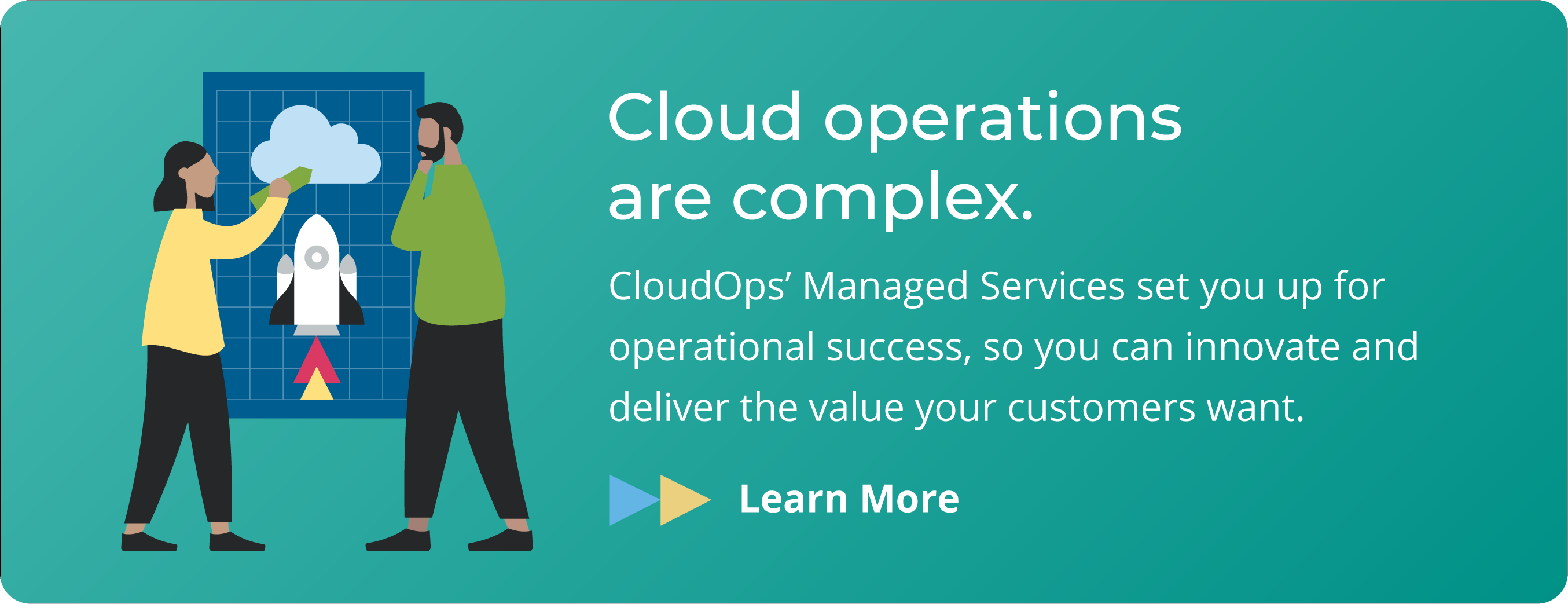Navigating the Cloud Native Landscape with CloudOps

To thrive in today’s digital age, organizations must design and implement adaptable technology stacks that provide their business with agility. Infrastructures and application platforms that auto-provision, scale, and heal are a key part of this, and they require the right tools and processes to do so.
While important, the process of modernizing legacy infrastructures and becoming cloud native can be elusive. The cloud native landscape is vast, and it’s easy to become overwhelmed by its growing number of competing and overlapping platforms and technologies.

There are no clearly defined blueprints for adopting DevOps processes and building cloud native technology stacks, and organizations can spend months deciding upon and experimenting with different solutions.
Not only are some tools better than others, but different tools are more suited for different use cases and must be adapted accordingly. The best technology stacks are often built with the same smart defaults, shared components that can be replicated across different platforms. To build cloud native technology stacks, decision-makers must selectively customize, and rearrange their chosen defaults. They must build like Lego and not like Playmobil.

The wrong technology choices today can result in a solution that doesn’t make sense tomorrow, but making no choices today can mean being surpassed by competitors and becoming obsolete. Becoming too reliant on a commercial provider today can lead to lock-in, but building a solution from scratch with open source tools can be expensive and time-consuming. Each organization must find its own, unique way through the landscape.
Technical leaders who have never modernized an application before may underestimate the complexity required to become cloud native. They may research and create detailed plans for transformation but will often face challenges they don’t expect. They will likely find themselves walking into common pitfalls that delay their projects indefinitely.
They may hire a team of unicorns thinking that will be enough to become agile. But without first aligning their processes with business value, any cutting-edge tools adopted will fail to deliver results. All the ideas, projects, products, and teams being introduced will be held back by increasingly outdated norms, processes, infrastructures, and skills. If nothing is aligned with the new operational models and technologies being introduced, any teams of digital unicorns hired will be locked behind a dam along with their potential. As pressure builds behind this dam, a digital deluge can threaten to drown the entire initiative.
Partnering with an experienced third-party can ease the process of DevOps transformation. With every project, consulting and professional services companies add knowledge and experience to their shared repository of expertise. They become knowledgeable about which tools lead to long-lasting success in which cases, and they develop smart defaults that can be replicated across multiple platforms to deliver value to a variety of customers. They learn where the most common pitfalls are and how they can be avoided. They understand cloud platforms and open source tools with the depth of every project ever worked on before. With this knowledge, they can help organizations modernize their legacy tools and processes.
However, there is no one-size-fits-all blueprint for transformation. Every organization has its own unique business and technical problems that can only be solved by a unique cloud strategy. To find that strategy, organizations must reflect on themselves, their markets, their customers, and their products, as well as find a partner who is cloud- and tool- agnostic but opinionated. This means being knowledgeable and experienced in a wide range of technologies, to offer unbiased opinions on which tools and platforms are best in which circumstances.

CloudOps is cloud and tool agnostic but opinionated, and we understand that a mixture of open source and proprietary tools are required to serve their customers best. For customers that require commercial solutions, we have partnered with industry leaders to create a best-of-breed toolbox for consuming cloud that can be replicated across a variety of platforms and adapted to a variety of customers.
We help our customers own their destinies in the cloud by building, operating, and transferring value in the application platform. With over fifteen years of experience working with open source tools and communities, DevOps practices, and cloud platforms, we can help organizations innovate their cloud native technology stacks more quickly than they would on their own.Contact us to learn how we can help you.

